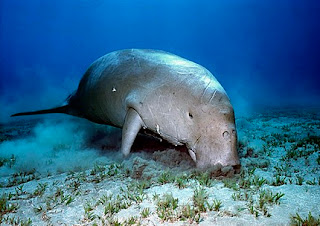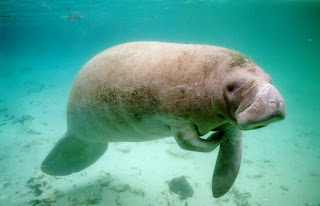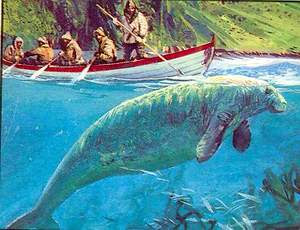Animal Wildlife | Stellers Sea Cow | The Steller's sea cow was first discovered in 1741 by explorers that ventured into parts of the Arctic Circle. When they were first recorded, the Steller's sea cow was said to be living in abundance in the North Pacific, however in less than 20 years of human contact, the Steller's sea cow had disappeared from the ocean completely. The Steller's sea cow was a large marine mammal that was found in abundance in the North Pacific. These enormous animals were closely related to the dugong and the manatee still found grazing in the oceans today, but were of considerable size at between eight and nine meters in length.
Steller's sea cows were large herbivores that had a seal-like appearance with a tail which resembled that of a whale. The Steller's sea cow was named after George Steller who discovered the animal and who described it: "The animal never comes out on shore, but always lives in the water. Its skin is black and thick, like the bark of an old oak, its head in proportion to the body is small, it has no teeth, but only two flat white bones one above, the other below". The Steller's sea cow was said to be a tame animal that spend most of it's time concerning itself with munching on kelp, which is possibly what made it so vulnerable later on. However, the Steller's sea cow was also said to be unable to submerge it's enormous body fully underwater making it an easy spot for human hunters.
The Steller's sea cow was a herbivorous animal that would have had a very similar diet to the dugong and manatees still extant today. This toothless animal would have spent the majority of its time grazing on kelp, sea weed and other aquatic grasses that grow in the shallows of the oceans. Before being discovered by humans, the Steller's sea cow would have had very few predators within it's watery world. Large shark species would have been the only predators able to tackle such an enormous meal, but non were more successful at hunting this enormous sea cow than humans who wiped out the entire species in just 17 years.
The Steller's sea cow would have mated and given birth to it's calf in the water (as these marine mammals do not go onto the land). In much the same way as it's smaller cousins, the female Steller's sea cow would have given birth to a single calf after a gestation period that probably lasted well over a year. The sea cow calf would of remained with it's mother until it was strong enough to become independent. Sadly, these remarkable giants of the sea, where wiped out by human hunters almost instantly after having been discovered by explorers. Today, it's smaller cousins are also under serious threat in their native habitats from over-hunting and increasing levels of pollution in the water.
Tags: manatee glens rehab, first class manatee, manatee first class, manatee health network, manatee healthcare system, manatee springs rehab, manatee county payroll, manatee glens bradenton, manatee landings marina, manatee cancer center, manatee technical institute, manatee technical, manatee christmas cards, manatee county ems, schools manatee, usf manatee, manatee county schoolboard






0 Response to "Steller's Sea Cow"
Post a Comment